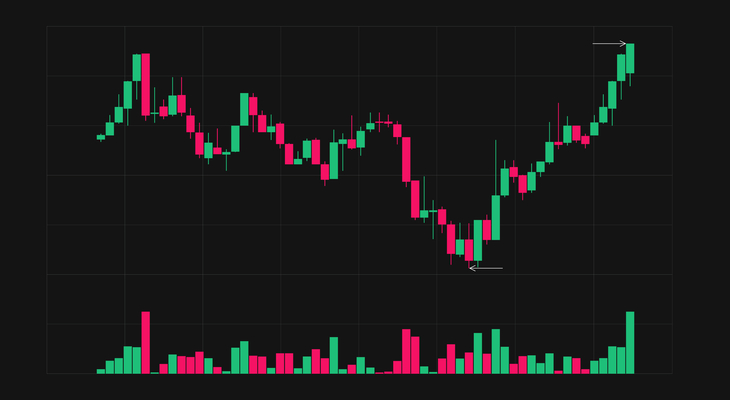Investing in the stock market can be an intimidating prospect for beginners, but it can also be a lucrative opportunity for those with the right knowledge and strategy. One of the most critical factors in achieving success in stock investing is timing. Knowing when to buy and sell stocks can significantly impact the profitability of your portfolio.
However, timing the market is not an exact science, and it requires careful research and analysis of market patterns and technical indicators. In this article, we will explore the importance of timing in stock investing and provide tips on the best times to buy and sell stocks.
Our analysis will draw on historical market trends, technical analysis, and market news to inform readers of the optimal times to make investment decisions. By understanding the patterns of the market, investors can make informed decisions that will help them achieve their financial goals and build a portfolio that can provide long-term financial freedom.
Key Takeaways
- Best time to buy stocks is between 9:30 and 10:30 AM
- Best time to sell stocks is around 3:00 – 4:00 PM
- Mondays and mid-month are good times to buy stocks
- Timing the market based on day of the week, month, or year is not recommended
Buying Stocks
Investors should consider historical market patterns, avoid trading during the first few hours of the market due to volatility, and focus on fundamental investment principles when buying stocks.
Investing in stocks is not just about picking the right stock at the right time, but also about understanding stock market trends and investor psychology. The best time to buy stocks is between 9:30 and 10:30 AM, as this is when the market tends to stabilize and become less volatile.
Investors must understand that timing is crucial when buying stocks. A stock’s price can fluctuate throughout the day, and it is important to enter the market at the right time to maximize gains and minimize losses.
By analyzing historical market patterns, investors can identify the best time to buy stocks. Additionally, investors must be aware of their own psychology and biases when making investment decisions.
It is important to focus on fundamental investment principles, such as researching the company’s financial health and growth potential, rather than making impulsive decisions based on emotions.
Selling Stocks
The act of divesting one’s ownership in a company’s shares is influenced by various factors that are unique to each individual and their investment objectives. Investor psychology plays a crucial role in determining the best time to sell stocks. The fear of missing out (FOMO) can cause investors to hold onto their stocks for too long, while the fear of losing money can cause them to sell too early. It is important to keep emotions in check and rely on market trends and indicators to make informed decisions.
Market trends and indicators can provide valuable insights into when to sell stocks. Technical analysis can be used to identify potential price movements, while fundamental analysis can help investors determine if a company’s financials support the current stock price. Additionally, paying attention to the overall market can provide useful information. If the market is experiencing a downturn, it may be wise to sell stocks and wait for a better buying opportunity.
Ultimately, it is important to have a solid understanding of one’s investment objectives and use a disciplined approach when deciding when to sell stocks.
-
Investor psychology plays a significant role in determining when to sell stocks.
-
Market trends and indicators, such as technical and fundamental analysis, can provide valuable insights.
-
Paying attention to the overall market can also be useful.
-
A disciplined approach and a solid understanding of investment objectives are essential for making informed decisions.
Research and Analysis
Research and analysis are crucial components of successful stock investing. To make informed decisions, investors must gather and analyze data on various factors, including company performance, market trends, and economic indicators.
One approach to analyzing stocks is technical analysis, which involves using charts and statistical trends to identify potential buy and sell signals. Technical analysis can provide investors with insights into market sentiment and price movements, helping them to make more informed investment decisions.
In addition to technical analysis, investors should also analyze company financials to gain a better understanding of a company’s financial health and growth potential. Key metrics to consider include revenue, earnings per share, profit margins, and debt levels.
By analyzing financial statements and comparing them to industry benchmarks, investors can identify companies with strong financial fundamentals and growth potential. Proper research and analysis can help investors make informed decisions and avoid common pitfalls in stock investing.
Frequently Asked Questions
How do global events affect the best time to buy and sell stocks?
The impact of political instability on the stock market is a common concern for investors. It can cause market volatility, which in turn affects the timing of buying and selling stocks.
Market volatility refers to the rapid and unpredictable changes in stock prices. It can happen due to various global events such as political instability, economic crises, natural disasters, or pandemics. These events can create uncertainty in the market, making investors wary of taking risks.
As a result, the best time to buy and sell stocks can be affected. However, it is important to note that market timing based on global events is not recommended as it can be unpredictable. Instead, investors should focus on fundamental and technical analysis, as well as extensive research, to make informed investment decisions.
What role does diversification play in stock investing and timing?
Portfolio allocation and risk management are crucial factors to consider when investing in stocks. Diversification plays a significant role in portfolio allocation by spreading investments across different sectors, industries, and asset classes. This strategy helps to minimize risk and protect against market volatility.
Moreover, diversification enables investors to manage their risk-return profile and optimize their returns. Effective risk management involves identifying and assessing risks, developing a risk management plan, and implementing risk mitigation strategies. Investors should also consider their investment goals, time horizon, and risk tolerance when making investment decisions.
A well-diversified portfolio and effective risk management practices can help investors achieve their financial objectives and avoid significant losses.
Are there any specific industries or sectors that tend to perform better at certain times of the year?
It is a peculiar irony that while the stock market is subject to unpredictable fluctuations and volatility, investors are constantly seeking patterns and trends to guide their investment decisions.
Seasonal trends in the stock market have been a subject of interest for investors for decades, with many attempting to capitalize on historical data to predict the performance of certain industries or sectors at specific times of the year.
While there are some seasonal trends that have been observed, such as the ‘January effect’- where small-cap stocks tend to perform better in January – it is important to note that these trends are not foolproof and should not be relied on solely for investment decisions.
In-depth research and analysis of individual companies and industries is crucial for successful stock investing.
How do different types of investors, such as long-term versus short-term, approach timing in stock investing?
When it comes to timing stock investments, different types of investors have varying approaches.
Long-term investors tend to focus on the fundamentals of a company, such as its financial health and market position, and may hold onto their investments for years or even decades. This approach allows for the potential of significant returns over time, but also requires patience and a willingness to weather market fluctuations.
On the other hand, short-term investors may engage in more frequent buying and selling of stocks, aiming to profit from shorter-term price movements. While this approach can lead to quicker gains, it also involves higher risk and requires more active management.
Additionally, psychological factors can influence timing decisions in stock investing, as emotions such as fear and greed can lead to impulsive buying or selling.
It is important for investors to carefully consider their goals and risk tolerance when determining their approach to timing stock investments.
What are some common mistakes that people make when trying to time the market?
Emotional biases and technical analysis are two common pitfalls that investors fall into when trying to time the market.
Emotional biases, such as fear and greed, can cloud judgment and lead to irrational decisions.
Technical analysis, while useful, can also be misinterpreted or relied on too heavily, leading to incorrect timing decisions.
Additionally, attempting to time the market based on day of the week, month, or year is not recommended, as historical patterns do not always repeat themselves.
In order to avoid these mistakes, investors should focus on fundamentals and basic investment principles, conduct thorough research, and tailor investments based on corporate data.
It is important to approach timing decisions with a level-headed and analytical mindset, rather than being swayed by emotions or relying too heavily on technical analysis.
Conclusion
In conclusion, timing is a crucial element in the world of stock investing. While it can be challenging to predict the best times to buy and sell stocks, historical market patterns and technical analysis can provide valuable insights. It is essential to conduct thorough research and analysis before making any investment decisions, as this can greatly impact the success of your investments in the long term.
One interesting statistic to note is that the average holding period for stocks has decreased significantly over the past few decades. In the 1960s, the average holding period was around eight years, while in recent years, it has decreased to less than one year. This trend highlights the importance of timing and the need to stay informed and up-to-date on market trends and events.
Overall, successful stock investing requires a combination of knowledge, strategy, and timing. By understanding the best times to buy and sell stocks and conducting thorough research and analysis, investors can increase their chances of achieving significant capital multiplication in the long term.












